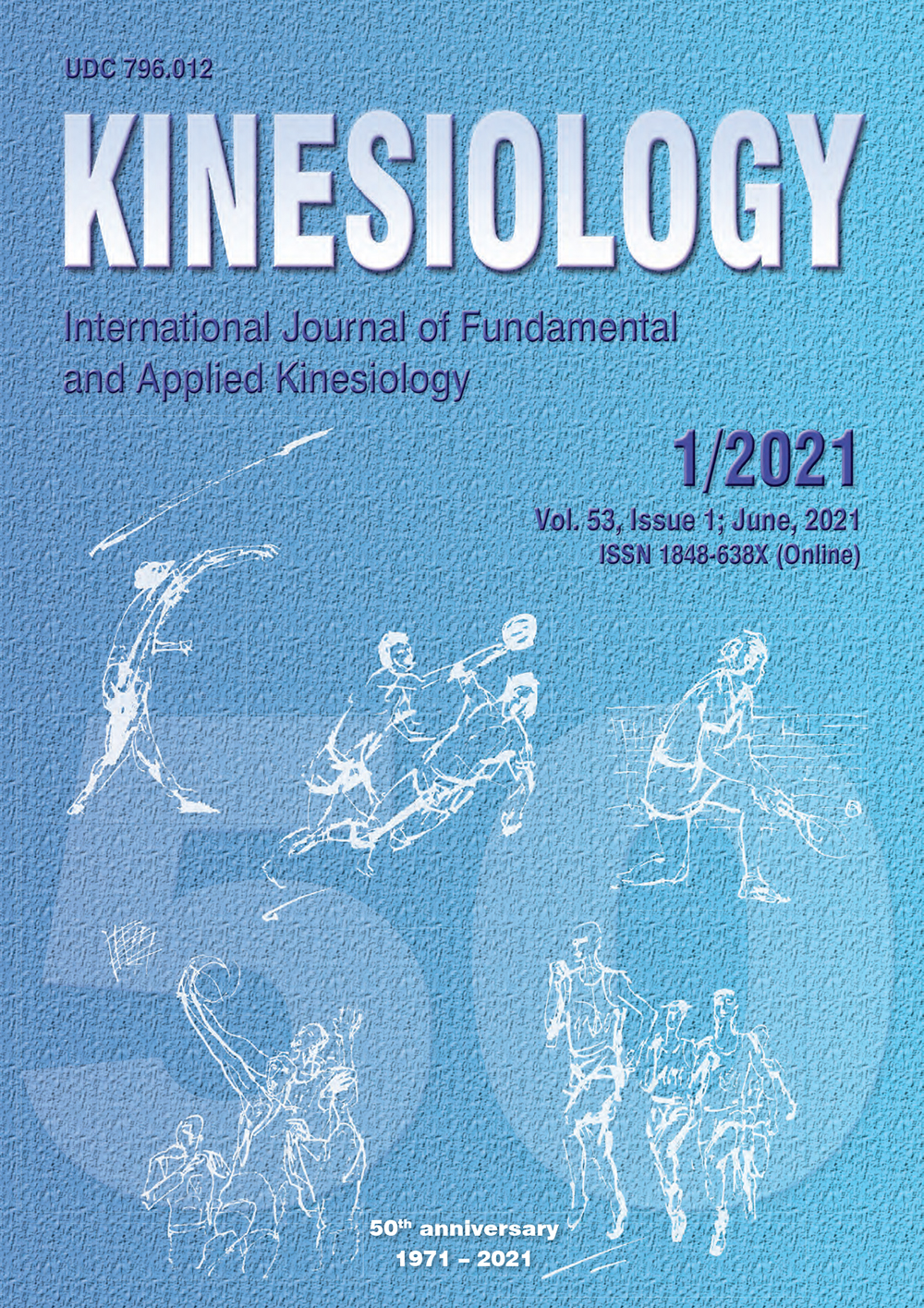Internal training load and fitness profile between adult team versus junior team soccer players
Abstract
The aim of the present study was to compare the fitness profiles and internal training loads between senior team and academy team soccer players during an in-season phase. Twenty two professional soccer players from the senior team (n=12; 28.3 2.0 years) and under 19 (U19) team (n=10; 18.00.4 years) of the same club participated in the present study. High intensity running performance, acceleration, maximal sprint, and change of direction (COD) ability were all tested during the mid-season break of a competitive season. Session rating of perceived exertion (sRPE) reflecting the internal training load during the entire first half of the season was being documented daily. Senior players showed small to moderate superiority in COD (1.8%, 90% confidence intervals [CI, -3.2; 7.1], ES: 0.24 [-0.44; 0.92]), maximal sprint (2.3%, [0.0; 4.7], ES: 0.81 [0.00; 1.63]) and acceleration (3%, [0.2; 5.8], ES: 0.96 [0.06; 1.85]). The U19 showed small better high-intensity intermittent running fitness (2.5%, [-1.2; 6.3], ES: 0.39 [-0.20; 0.97]). When analyzing internal training loads (from M-3 to M+3), the U19 showed small to very large higher sRPE values for all days (range; 8.2%; 229.3%, [-8.1; 328.3], ES range; 0.25; 2.70, [-0.26; 3.3]), except for match days (M), on which unclear trivial difference was observed (-1.5%, [-9.6; 7.5], ES -0.09 [-0.65; 0.46]). Our results showed that senior players and youth players had different fitness profiles and internal training loads during the first half of a competitive season; this should be taken into consideration when designing specific and individualized recovery and training sessions.
Key words: football, high-intensity intermittent performance, perceived exertion, change of direction, maximal sprint, acceleration
Downloads
Published
How to Cite
Issue
Section
License

This work is licensed under a Creative Commons Attribution-NonCommercial 4.0 International License.
At Faculty of Kinesiology we recognize that access to quality research is vital to the scientific community and beyond. Kinesiology is non-profit journal and all costs of publishing and peer review process are covered by the publisher itself or other funding sources like Ministry of Science and Education of the Republic of Croatia. Full text papers are also available free of charge at http://hrcak.srce.hr/kineziologija. There are no restrictions on self archiving of any form of paper (preprint, postprint and publisher's version).
Articles are distributed under the terms of the CC BY - NC 4.0
Kinesiology does not charge any fees to authors to submit or publish articles in our journal.


